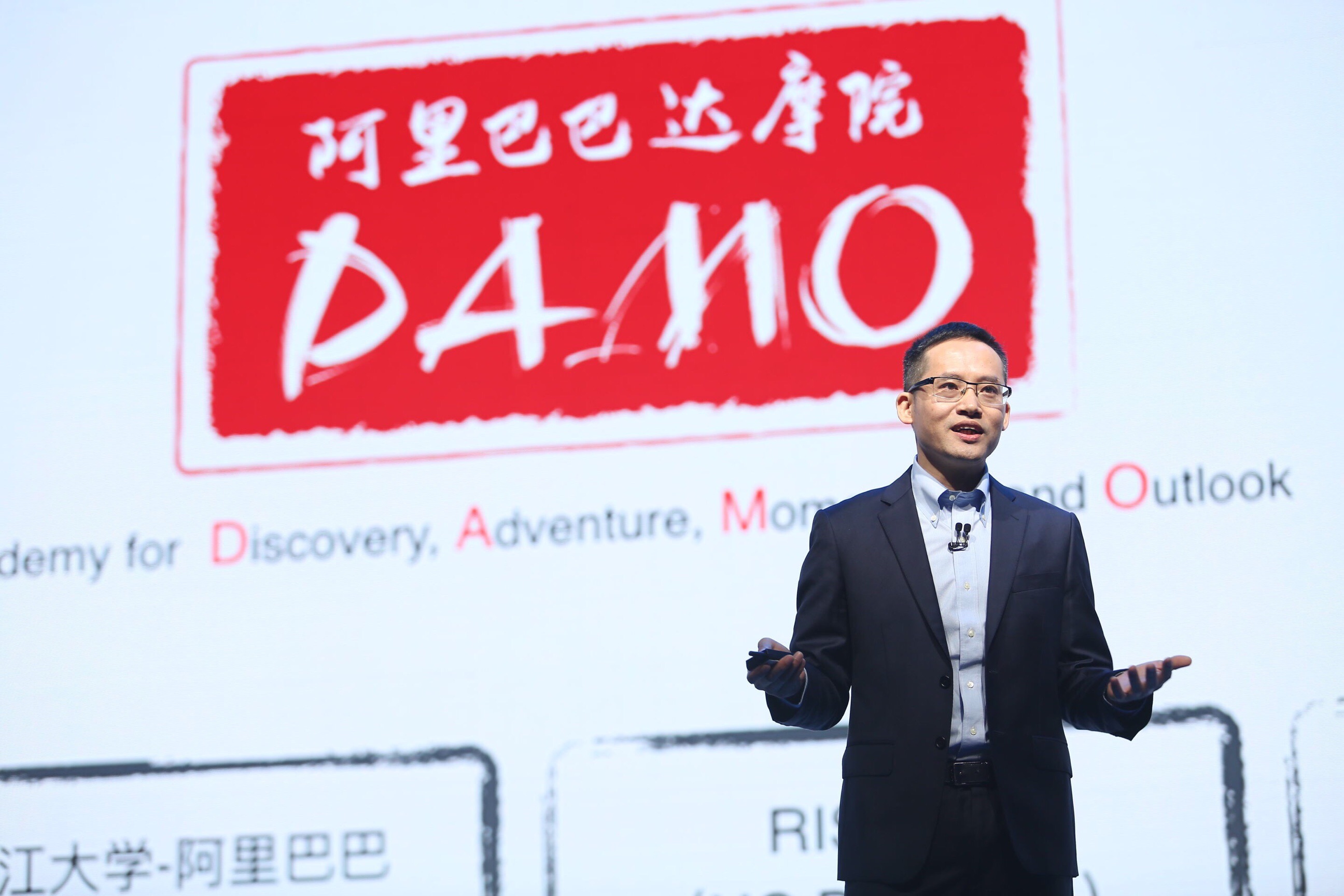Alibaba Aims to “Master the Laws” of AI and Put Virtual Helpers Everywhere

China’s e-commerce giant Alibaba has announced plans to invest more than $15 billion over the next three years in researching emerging technologies including artificial intelligence and quantum computing.
Jack Ma, Alibaba’s executive chairman, announced his decision to establish the Alibaba DAMO Academy (DAMO stands for Discovery, Adventure, Momentum, and Outlook) on the first day of the company’s 2017 Computing Conference, which opened on Wednesday. Ma said the academy will do research aimed at “solving problems” related to the Internet of things, fintech, quantum computing, and AI. It will open seven research labs in China, the U.S., Russia, Israel, and Singapore.
Chinese tech companies are increasingly looking to invest in cutting-edge research, especially artificial intelligence (see “China’s AI Awakening”). Alibaba’s future has never been so closely intertwined with original research. The company already has more than 25,000 engineers working on applying AI advances to consumer products and cloud computing services.
The head of the DAMO Academy is Jeff Zhang, Alibaba’s chief technology officer. Zhang spoke to MIT Technology Review contributing editor Yiting Sun at the event in Hangzhou.
What’s your vision for the Alibaba DAMO Academy?
We’ll be recruiting worldwide and across industries. Some will come from a background in life sciences, some will be materials scientists, and others will be from manufacturing. There is immense space to explore in terms of integrating AI into manufacturing.
We hope to attract the top talent in many fields. Alibaba is a vast platform, so anyone who joins can try things out anytime. In universities, it’s very hard to do research related to big data and AI due to limited access to data and computing power. Some countries we’ll be recruiting in are the U.S., Singapore, Russia, and Israel.
What’s the connection between DAMO Academy and Alibaba’s traditional goal of serving small and medium-size businesses?
We hope we don’t turn this academy into a separate research institution. Instead, we want to form a deeper connection with our core business.
Could you share some thoughts on the state of AI research?
I think the most important issue right now is how to develop a set of solid theories of deep learning. We have achieved something using deep learning on an engineering level, but science is about mastering the laws. Humans built aircrafts after understanding aerodynamics. So I think it’s important for us to really grasp the principles of neural networks, instead of just tweaking the parameters of a particular network to achieve a desired result. This will be one of the research areas of the DAMO Academy.
What’s Alibaba’s long-term plan for Tmall Genie, the smart speaker released in July?
We want to turn the voice-based AI technology that powers Tmall Genie into a standardized system and a module that can be embedded in other devices. For example, in September we announced a collaboration with a hotel in Sanya [a popular resort town in southern China] to turn its rooms into voice-enabled ones. Vacationers can draw the curtain and adjust the air conditioner using their voice. Tmall Genie can also make it possible for kids to talk to their toys, and help you talk to your oven so it roasts the chicken the way you want it.
How has your understanding of data evolved over your 13 years of working at Alibaba?
As a corporation that exists in the context of the Internet, our advantage is that we understand how to use data to transform our business. If we know how to use data smartly, our advertising revenue will grow, and our user experience will diversify.
My understanding of data is informed by two broader changes that have occurred recently. One is the transition from desktop computers to wireless devices, and another one is the fundamental change of users, who have a lot more choices today than before. In the beginning, we were fulfilling the users’ needs, providing whatever goods they wanted to buy. But now we are kindling users’ needs, because a lot of people go on [Alibaba’s shopping site] Taobao without knowing what they want to buy.
So now we need to create a perfect match between consumers and manufacturers, and this perfect match relies on data. We didn’t start out knowing this. We realized how important this is when we found that if we changed the pictures of merchandise on the front page a few times a day, users clicked more. And then we designed data-driven automated processes to update the front page every day.
What’s Alibaba’s biggest challenge?
The technology of Alibaba is a very complicated business system. Because it’s for payments and transactions, not a single thing is allowed to go wrong. Our biggest challenge is how to combine security and agility on a large scale. For example, we have a billion items on our shopping sites, and we must make sure that we don’t lose the Web page and transaction record of a single item, because if we do, the buyer would demand an explanation.
Keep Reading
Most Popular
Large language models can do jaw-dropping things. But nobody knows exactly why.
And that's a problem. Figuring it out is one of the biggest scientific puzzles of our time and a crucial step towards controlling more powerful future models.
The problem with plug-in hybrids? Their drivers.
Plug-in hybrids are often sold as a transition to EVs, but new data from Europe shows we’re still underestimating the emissions they produce.
Google DeepMind’s new generative model makes Super Mario–like games from scratch
Genie learns how to control games by watching hours and hours of video. It could help train next-gen robots too.
How scientists traced a mysterious covid case back to six toilets
When wastewater surveillance turns into a hunt for a single infected individual, the ethics get tricky.
Stay connected
Get the latest updates from
MIT Technology Review
Discover special offers, top stories, upcoming events, and more.